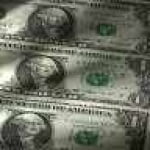
But how can dosages of more debt be the cure for too much debt? Can more Cutty Sark be the cure for a dipsomaniac? Certainly, in both instances, and after some interim relief, the cure always proves to be much worse than the disease.
Without question, a moment of clarity is approaching that will bisect the world of today from the world of tomorrow, like the Patriot Act bisects the present world from its prior state of bliss. Thus, what follows is a rudimentary preview of what’s in store. But first, some context is in order…
The fake money system – a system centered on debt based legal tender and centrally fabricated interest rates – produces booms and busts of greater extremes with each progression of the business cycle. This century alone we’ve experienced two iterations of these boom and bust scenarios. First the dotcom bubble and bust. Then the housing boom and crash.
Make no mistake, these booms and busts were anything but garden variety gyrations of the business cycle. In fact, the Federal Reserve’s finger prints are all over them. The booms originated from Fed monetary policy misadventures. The busts were triggered by Fed monetary policy mishaps.
Anatomy of a Mishap
Presently, we’re closing in on a decade’s long economic boom and bull market in stocks. This boom, like the boom of the mid-2000s, advanced during an extended period of monetary policy misadventures. This was the ZIRP and QE misadventure from 2009 through 2015, which distorted financial markets and disfigured the economy.
The last several years of this boom and bull market, however, have been a monetary policy transition period. First the Fed tapered back QE. Then the Fed began ever so slightly reducing its balance sheet and raising the federal funds rate.
Obviously, the Fed’s tightening operations over the last several years have been done with kid gloves. The tightening increments have been subtle. They’ve also been telegraphed from a mile away. But that doesn’t mean a monetary policy mishap, and subsequent bust, will somehow be averted.
The crossover into the monetary policy mishap stage is never apparent until well after the fact. In truth, the crossover may have already happened…and we just don’t know it. The mishap will come as a surprise.
On a glorious day, much like today, when everything appears to be unfolding according to plan, all of the suddenly, out on the margins, an emerging market economy will be stricken by a debt crisis and go kaput. Moments later, during much confusion and panic, another two or three more emerging markets will also croak.
Then Fed Chair Powell, just as Bernanke did at the onset of the subprime mortgage meltdown, will step forward with calming confidence and declare the sickness to be contained. But the reassurance will be short lived. Because the contagion will have already spread to the center of the financial system.
Then, to Wall Street’s astonishment, a major financial institution will collapse – like Lehman Brothers a decade ago – and the flow of credit will be reduced to that of cold molasses. After that, things will really get out of hand…
Honest Work for Dishonest Pay
The impending crisis, intensified by the dual stressors of currency and trade wars, will bring with it a vast collection of state sponsored solutions to save the world from itself. Any and all ideas, ranging from the absurd to the ludicrous, will be put to the acid test so long as they meet two very critical criteria. They must preserve the status quo and further concentrate wealth into the hands of the few.
One trio of bad ideas, which was burped into the atmosphere last weekend by former IMF chief economist Olivier Blanchard, is for the Fed to combat the next recession by buying stocks, financing the deficit, and directly purchasing goods. Surely, Blanchard’s a clever fellow. He’s even a Professor of Economics emeritus at MIT.
Yet, predictably, Blanchard didn’t mention that the Fed would need to create money from thin air so that it could buy stocks, loan it to the government, and go on its massive spending spree. Perhaps these massive helicopter money drops would prevent asset prices from deflating. But they would also destroy any remaining semblance of market derived pricing, and perpetuate an upside-down economy.
Blanchard also didn’t mention that these actions would transfer the ownership of publicly traded companies, and future tax payer labors, to the Fed. Conceivably, there are infinite places where this would all lead – though we don’t suspect any of them would be very appealing.
One direction Blanchard’s plan would take us is to a place where taxpayers and the company’s they work for would be reduced to milk cows not for the federal government…but for private bankers. This, in turn, would complete the central banker’s long desired wealth extraction scheme.
Still, that doesn’t mean things would be all bad. Here at the Economic Prism we’re eternal optimists. We see the glass half full. We make lemonade with our lemons. When we spill salt, we throw a pinch over our left shoulder and right into the devil’s eyes.
Moreover, as a milk cow for private bankers we’re confident we’d still find plenty of satisfaction – and have a little fun too – while giving an honest day’s work for a dishonest day’s pay.
Sincerely,
MN Gordon
for Economic Prism





